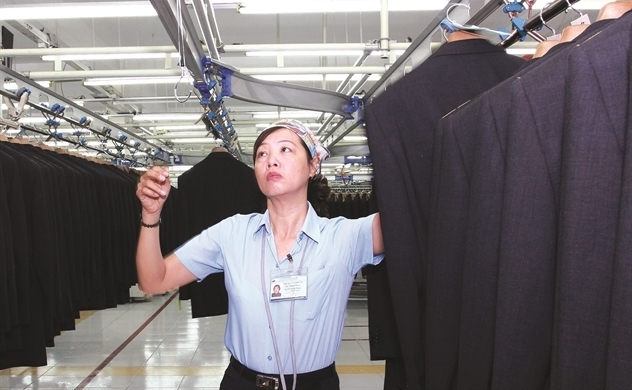While international experts warn of the massive job loss in the textile and garment industry in the near future, Vietnamese do not think this will happen in Vietnam.

According to Le Tien Truong, general director of Vinatex, the country's largest textile and garment producer, the 4.0 industry revolution will bring big challenges to Vietnam’s enterprises. Investments in modern technologies will require huge capital which means high costs and high amortization level for equipment.
Most textile and garment companies in Vietnam are small and medium with low financial capability.
Another big challenge for this labor intensive industry is the redundancy of workers in the production of simple products such as basic shirts, basic trousers and T-shirts.
| While international experts warn of the massive job loss in the textile and garment industry in the near future, Vietnamese do not think this will happen in Vietnam. |
A report by ILO released three years ago said machines and new technologies in the 4.0 era would replace 85 percent of workers in Vietnam. However, according to Truong, the real figure would be 15 percent only.
Citing the World Bank’s report on job future, Truong said the automation of T-shirt comprises eight stages, while the production process of a complicated product comprises 78 stages.
He also stressed that as fashion changes every day, there are production stages which cannot be undertaken by machines.
The WEF 2018 report also said that in 2018-2022, with the impact of the 4.0 industry revolution, 75 million jobs in the world would be lost, but 133 million new jobs will be created.
In the textile and garment industry, the new jobs to be generated could be ones related to design and supply chain management.
Truong is optimistic about the future of Vietnam’s textile and garment industry in the 4.0 period, saying that Vietnam’s competitiveness will be increasing and its market share will go up.
Vietnam’s textile and garment market share in the US increased from 6 percent in 2010 to 12 percent in 2017. And once Vietnam’s production capacity increases, the demand for workers will be increasing.
Regarding the study method used by ILO to predict workers in the textile and garment industry, an analyst said the organization may refer to the studies of Frey and Osborne, the authors of the book about the jobs in the US.
The study, made public in 2013, predicted that 47 percent of workers in the US would lose their jobs because of the influences of computerization. However, the unemployment rate in 2014-2018 was 4-6 percent only.
Thanh Mai

How does yuan price reduction affect garment, footwear industries?
The sudden depreciation of Chinese yuan against the US dollar brings more difficulties to Vietnam’s yarn industry, according to Vietnam Textile and Apparel Association (VITAS).

VN textile & garment sector waiting for CPTPP benefits
The textile and garment industry has orders to export $18 billion worth of products, but the opportunities brought by CPTPP have not been that great so far.
 The scenario that 85 percent of garment workers would lose jobs to robots because of the 4.0 industry revolution will not happen in Vietnam in the next 10 years, businesspeople say.
The scenario that 85 percent of garment workers would lose jobs to robots because of the 4.0 industry revolution will not happen in Vietnam in the next 10 years, businesspeople say.